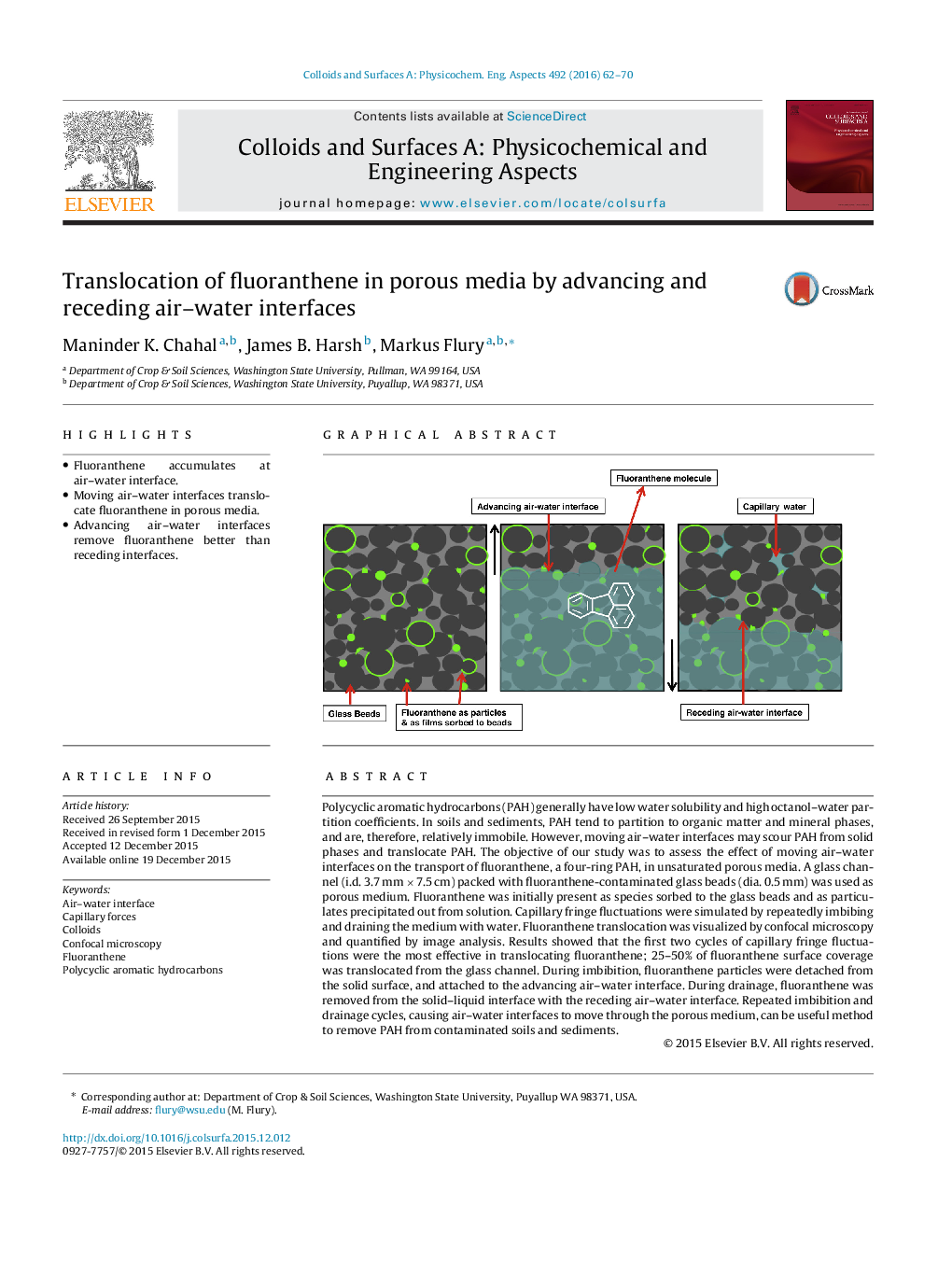| کد مقاله | کد نشریه | سال انتشار | مقاله انگلیسی | نسخه تمام متن |
|---|---|---|---|---|
| 591766 | 1453881 | 2016 | 9 صفحه PDF | دانلود رایگان |
• Fluoranthene accumulates at air–water interface.
• Moving air–water interfaces translocate fluoranthene in porous media.
• Advancing air–water interfaces remove fluoranthene better than receding interfaces.
Polycyclic aromatic hydrocarbons (PAH) generally have low water solubility and high octanol–water partition coefficients. In soils and sediments, PAH tend to partition to organic matter and mineral phases, and are, therefore, relatively immobile. However, moving air–water interfaces may scour PAH from solid phases and translocate PAH. The objective of our study was to assess the effect of moving air–water interfaces on the transport of fluoranthene, a four-ring PAH, in unsaturated porous media. A glass channel (i.d. 3.7 mm × 7.5 cm) packed with fluoranthene-contaminated glass beads (dia. 0.5 mm) was used as porous medium. Fluoranthene was initially present as species sorbed to the glass beads and as particulates precipitated out from solution. Capillary fringe fluctuations were simulated by repeatedly imbibing and draining the medium with water. Fluoranthene translocation was visualized by confocal microscopy and quantified by image analysis. Results showed that the first two cycles of capillary fringe fluctuations were the most effective in translocating fluoranthene; 25–50% of fluoranthene surface coverage was translocated from the glass channel. During imbibition, fluoranthene particles were detached from the solid surface, and attached to the advancing air–water interface. During drainage, fluoranthene was removed from the solid–liquid interface with the receding air–water interface. Repeated imbibition and drainage cycles, causing air–water interfaces to move through the porous medium, can be useful method to remove PAH from contaminated soils and sediments.
Figure optionsDownload as PowerPoint slide
Journal: Colloids and Surfaces A: Physicochemical and Engineering Aspects - Volume 492, 5 March 2016, Pages 62–70
